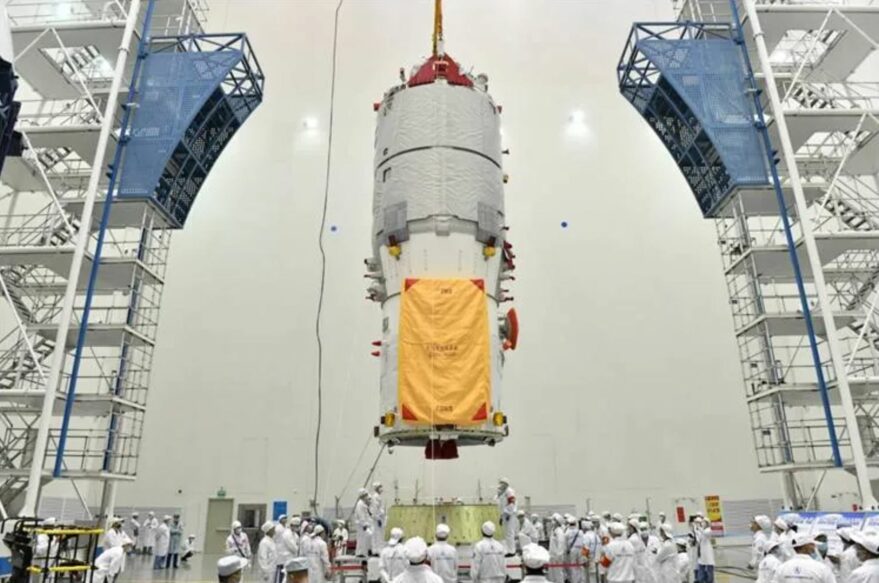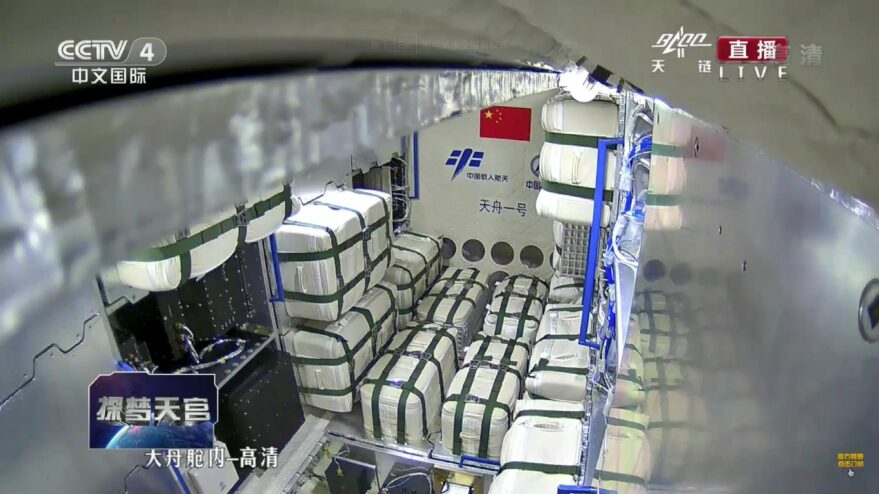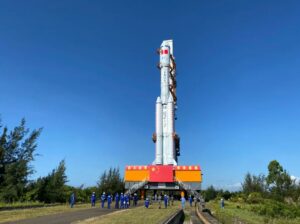Rollout took place late May 15 Eastern (May 16 local time) at the coastal Wenchang satellite launch center. Final checks, rehearsals and pre-launch preparations will take place ahead of an instantaneous launch window expected around May 20 local time.
The roughly 13-metric-ton Tianzhou-2 cargo spacecraft will head to low Earth orbit to rendezvous and dock with China’s Tianhe space station core module.
Tianzhou-2 will transfer propellant to Tianhe for maintaining its orbit and also deliver supplies to support crewed future missions.
Three astronauts are set to launch for Tianhe on the three-month Shenzhou-12 mission in June. The mission will launch on a Long March 2F rocket from Jiuquan in the Gobi Desert.
Tianzhou-2 will carry 4.69 tons of cargo in a pressurized segment and 1.95 tons of propellant, according to the China Manned Space Agency (CMSA).
The 22.5-ton Tianhe space station core module launched late April 28 Eastern on a Long March 5B rocket and is now in a 360 by 385-kilometer orbit inclined by 41.5 degrees. The core stage of the Long March 5B made an uncontrolled reentry May 8 after intense media coverage.

Tianzhou-2 is the second of 11 launches scheduled for 2021 and 2022 to construct China’s 66-ton, three-module orbital outpost.
A Long March 2F rocket and Shenzhou spacecraft will also be on standby at all times at Jiuquan to perform emergency rescue missions to the space station.
China launched Tianzhou-1 in 2017 to dock with the Tiangong-2 space lab. That mission tested and verified technologies for fuel transfer in microgravity, a necessary capability for maintaining the orbit of the Chinese space station.
The Long March 7 is one of a number of new-generation kerolox and hydrolox rockets developed by China over the past decade. These include the Long March 5, 6, 7 and 8 series of rockets.
It is powered by 120-ton-thrust YF-100 and 18-ton-thrust YF-115 engines burning kerosene and LOX on the first, second and booster stages. The first stage will not reach orbital velocity and will fall within a predefined area in the ocean.
China first conceived its plan to construct a space station in 1992. The country became the third to develop independent human spaceflight capabilities with the Shenzhou-5 mission in 2003.




